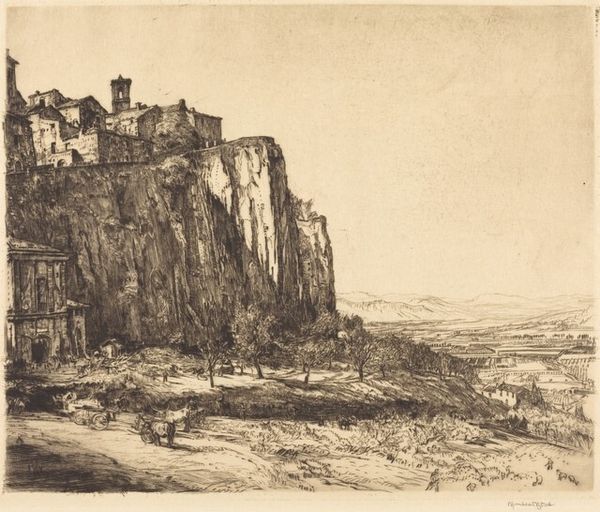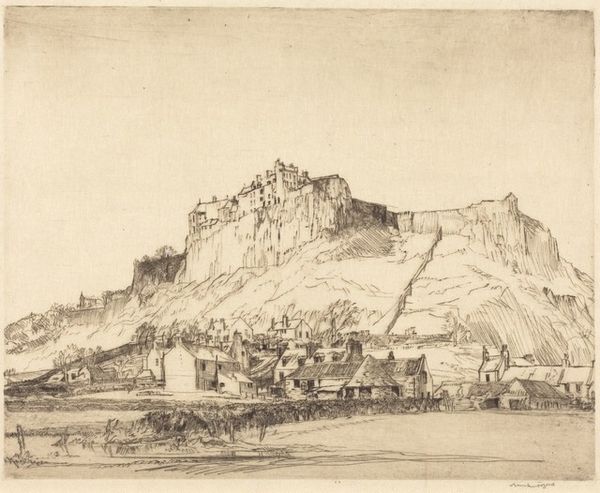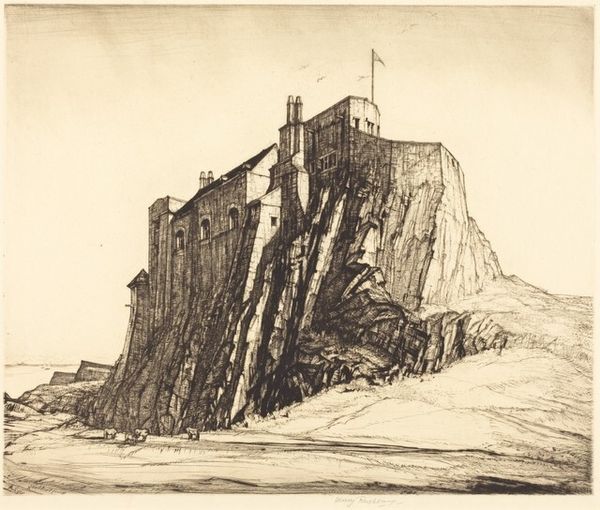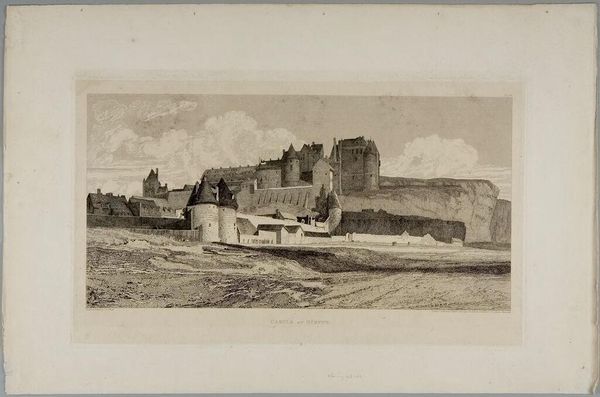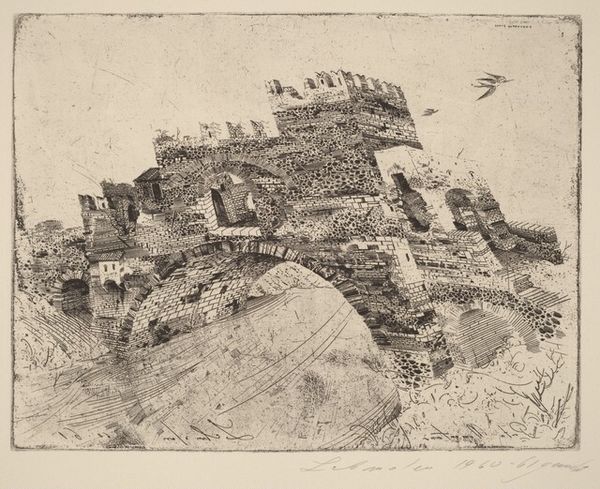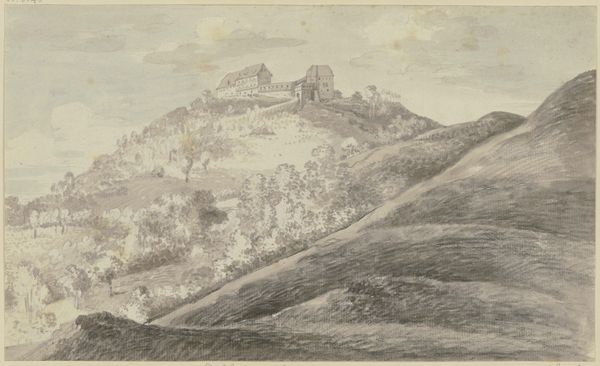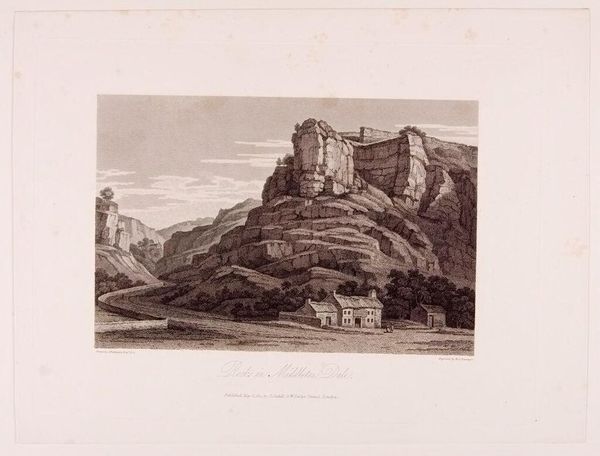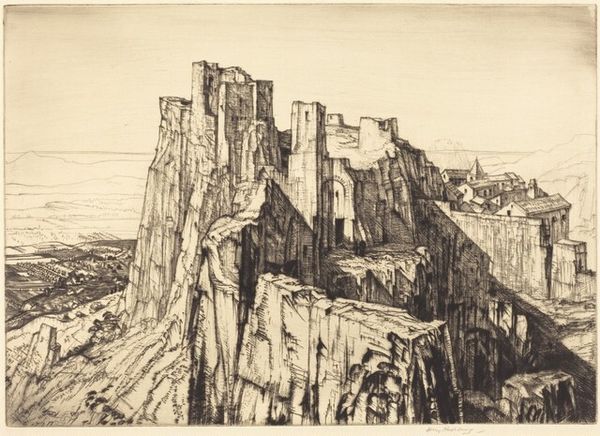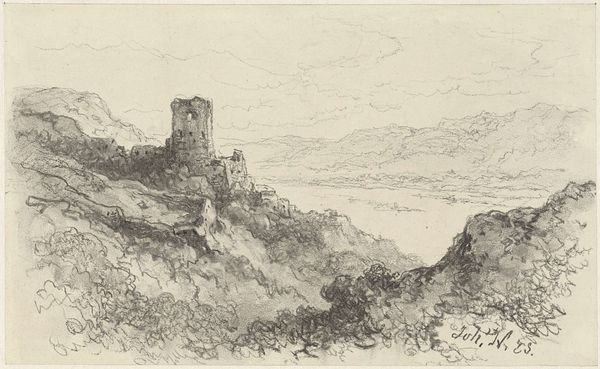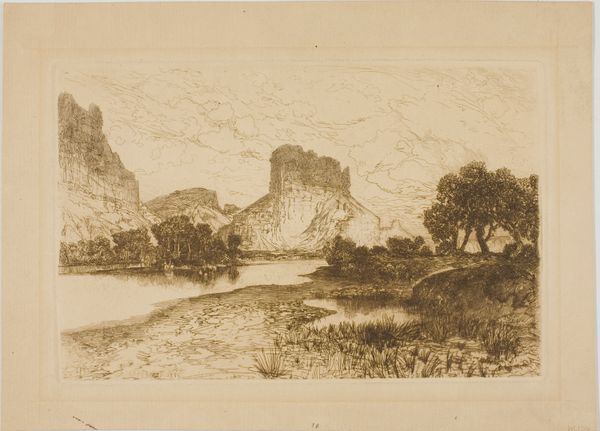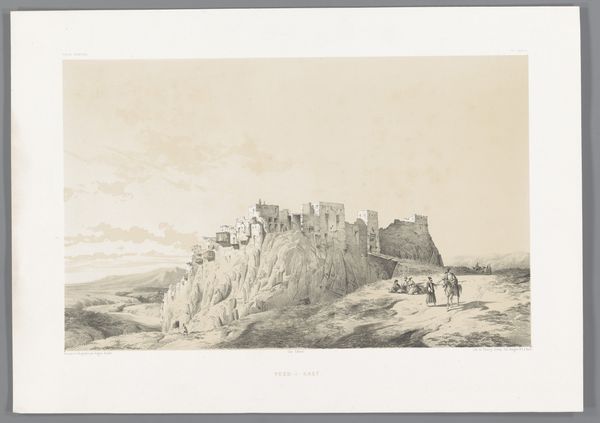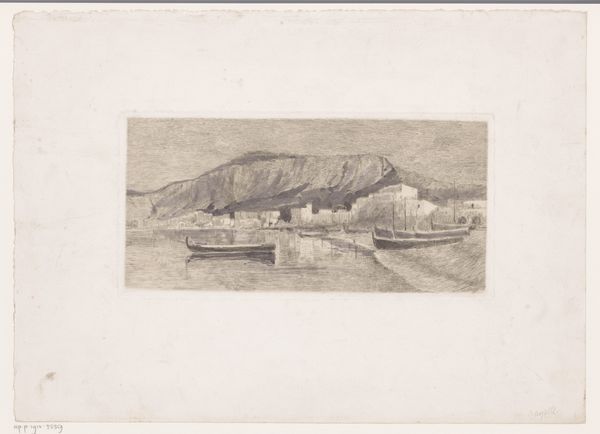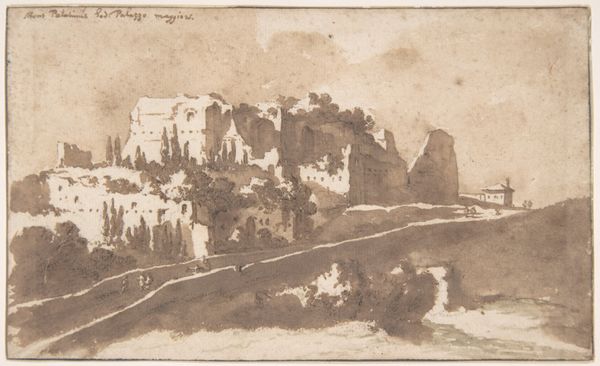
print, etching
# print
#
etching
#
landscape
#
cityscape
#
realism
Copyright: National Gallery of Art: CC0 1.0
Curator: Looking at this etching titled "Stirling Castle, No. 2," crafted in 1909 by Muirhead Bone, I am immediately struck by the immense scale Bone has conveyed in this landscape, particularly of the rockface upon which Stirling Castle sits. Editor: The almost severe monochromatic palette creates a sense of somber history looming over the domestic space, these small humble buildings are dwarfed. I mean, it is a romantic perspective on power and its relationship to the common person. Curator: Precisely. Muirhead Bone gained recognition for depicting architectural subjects during a time of massive change in urban centers and industrial landscapes. He presents a realistic vision of Stirling Castle as it sits enthroned above the town and its citizens. Editor: And that's what I find so captivating—the castle as both a historical monument and a symbol of dominance, the way he has angled the foreground to emphasize the steep incline further intensifies the castle’s imposing stance. Curator: Bone’s skillful handling of etching techniques really draws our eyes toward that striking rocky base. You can almost feel the geological force. His meticulous lines offer texture in every plane, but more dramatically here. It feels less about celebrating grandeur, and more a focus on nature and architecture in combination. Editor: I agree that the artistry is amazing but how might his aesthetic choices impact our contemporary views on institutions and power structures? Especially with consideration to today's post-colonial frameworks where we consider who are monuments for and who do they serve? Does this etching reinforce a romanticized perception of these old power dynamics? Curator: That’s an astute point. These are questions that continuously shift across time and artistic interpretations. How does art participate in the wider dialogues regarding societal equity? How do museums interpret works of art with sensitivity and historical accuracy? This work reminds us to always reevaluate power in context and artistic intention in a social construct. Editor: So many of these images serve as points for discussions about value. We cannot let historical imagery stand unopposed, without that ongoing inquiry.
Comments
No comments
Be the first to comment and join the conversation on the ultimate creative platform.
